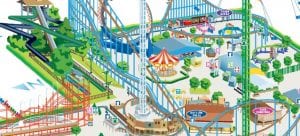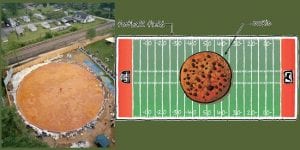
During this lesson, students will be put to the test, using their prior knowledge from the previous geometry unit on two- and three-dimensional shapes involving area and perimeter.
You and your team have just been hired by Walt Disney Parks and Resorts Worldwide to landscape a brand new amusement park with rides. WDPR has provided you with a blank map with letters E through M, representing the nine rides that you must include in your design. Your task is to map out the most effective design in order to maximize the number of visitors to each ride. Your job is to gather all of the information you can, map out each ride using GeoGebra to graph your park, and present a justification as to why your design will maximize visitors to each of your rides.
In order to complete this lesson, students will be split into groups of 3-5. The class as a whole will have a set number of rides they must include in their park, and a set area for the park itself, but each group will devise different ride sizes and configurations throughout the map in order to maximize visitors to each ride.
